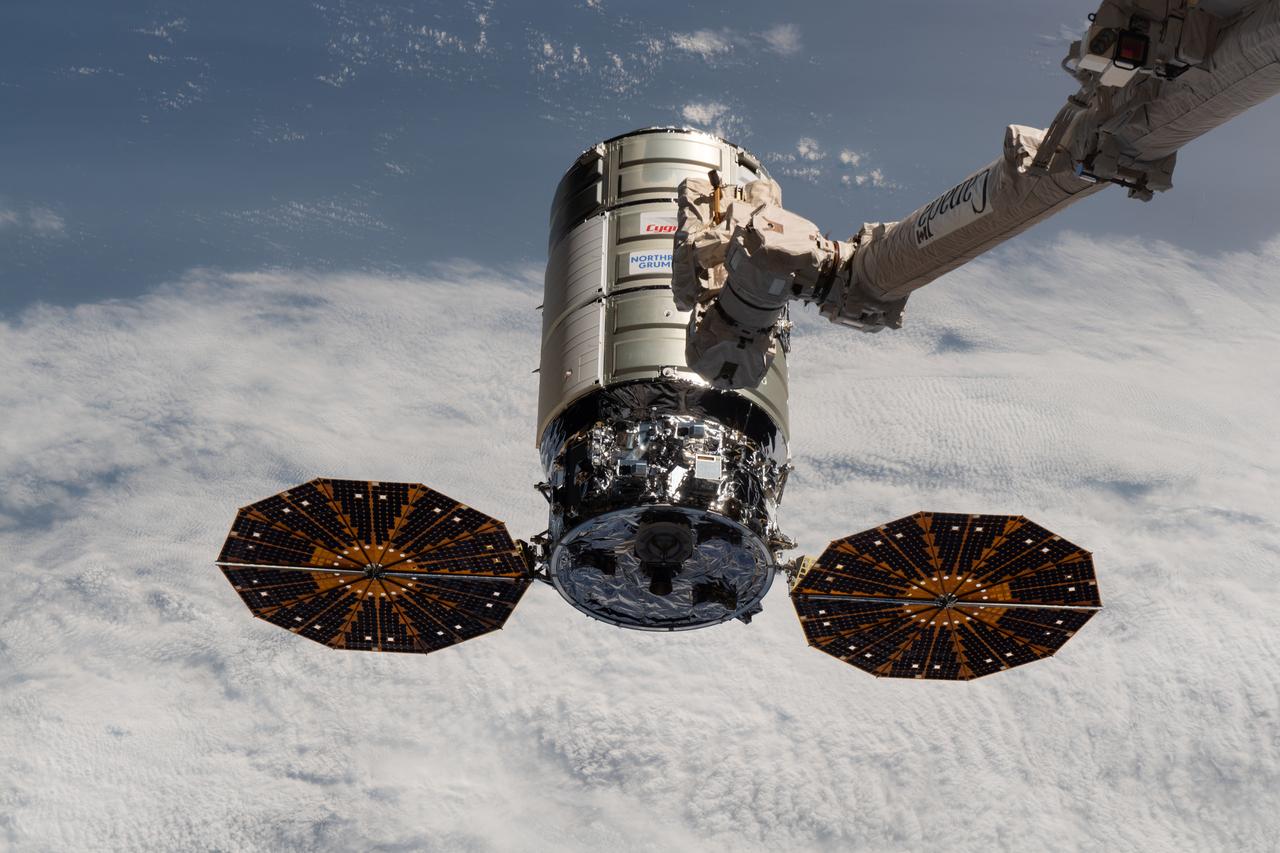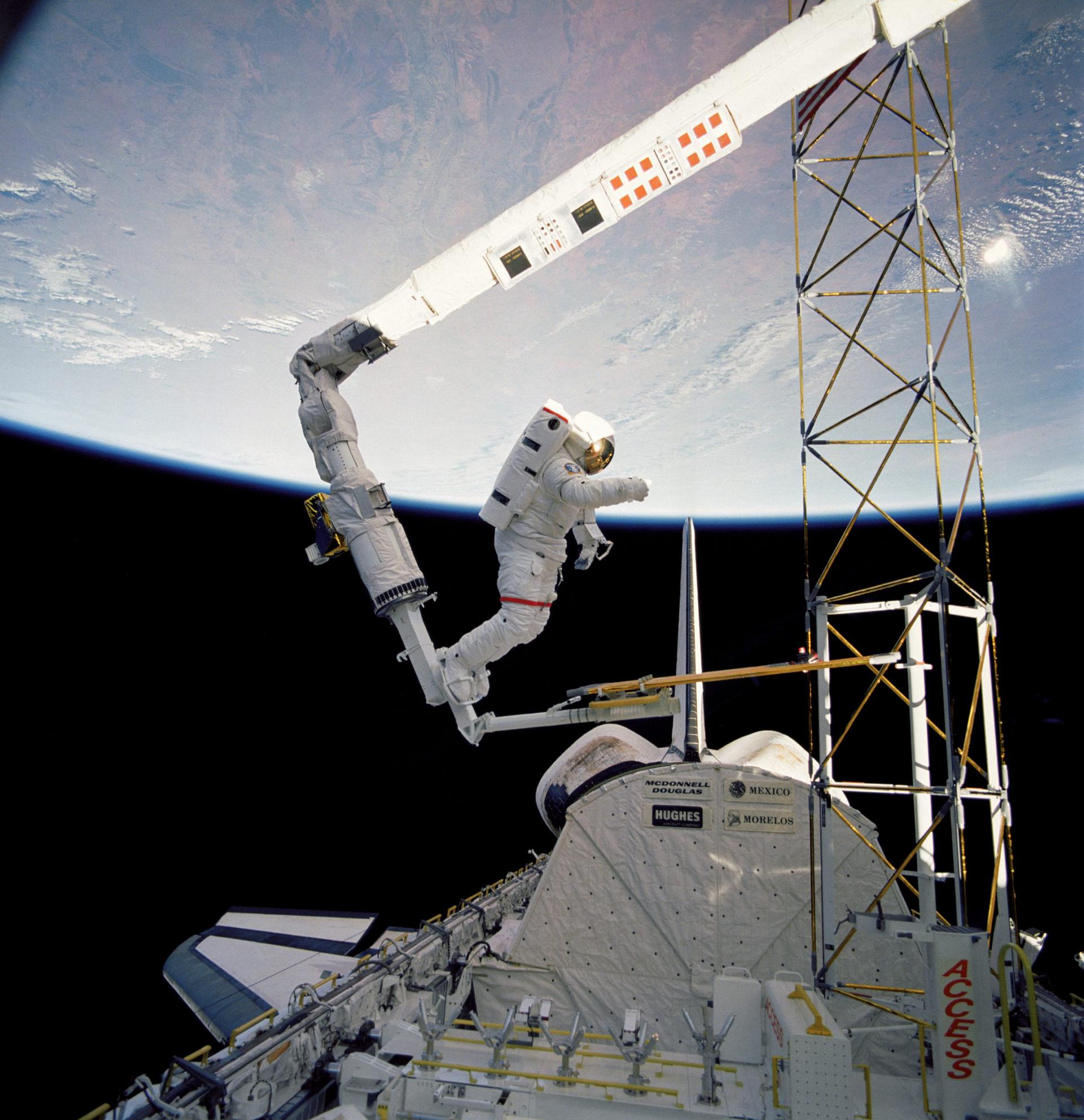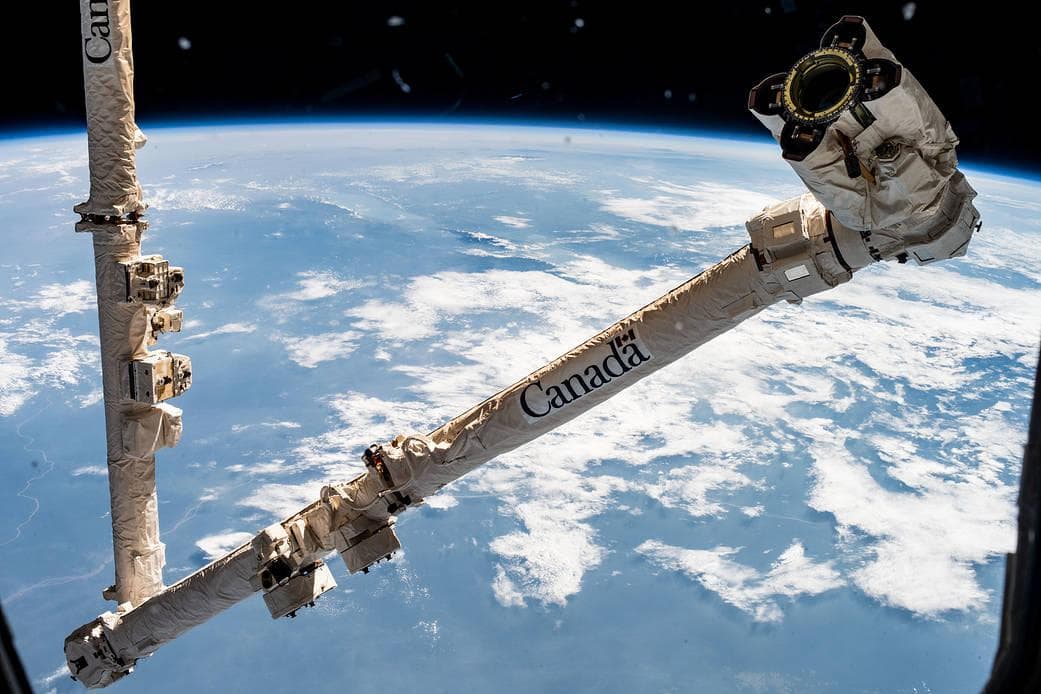A Canadian robotic arm on the International Space Station (ISS) is preparing for a major anniversary. Canadarm2, designed by MDA Space, will celebrate its 50th “space catch” on August 5 when the Northrop Grumman’s Cygnus cargo spacecraft docks at the ISS, delivering hundreds of kilograms of cargo with materials for experiments and food for Expedition 71 astronauts.

Canadarm and Canadarm2 space catchers
Canadarm2 was launched into space on April 19, 2001, on the STS-100 space shuttle. Astronaut Chris Hadfield installed the robotic arm for the first time, accompanying the event with a performance of the Canadian national anthem in space.
The first spacecraft capture for Canadarm2 occurred on September 17, 2009, when a Japanese HTV-1 (H-II Transfer Vehicle) docked to the ISS. Since then, the robot has worked on various spacecraft such as the SpaceX Cargo Dragon and Northrop Grumman’s Cygnus. Canadarm2 is part of a series of Canadian robotic arms based on telescopic tube technology.

The first Canadarm was used in space on November 12, 1981, aboard the STS-2 shuttle mission. This robot has been used for spacewalks, Hubble Space Telescope missions, and other tasks such as removing an ice clog from the space shuttle’s drain line. Canadarm’s success allowed the Canadian Space Agency (CSA) to pay for its astronauts’ seats on the Space Shuttle.
Development of Canadarm3
MDA Space acquired the space robotics division of Spar Aerospace in 1999. Canadarm2 has participated in many missions since 2001, including a challenging spacewalk in 2007 to repair a solar panel. The robot also helped build the ISS, and it continues to perform station maintenance tasks with the Dextre robot, launched in 2008.

The Canadarm2 team has gained such trust from NASA that many tasks are now performed from ground control centers near Montreal, Quebec. In 2019, CSA has been invited to join the Artemis program, for which the new Canadarm3 robot is being developed. It is expected to launch in 2029 to support the Gateway space station on the Moon.
The development of Canadarm3 made it possible to include Canadian astronaut Jeremy Hansen on the Artemis II mission, who will join three other crew members for a manned orbit of the Moon in 2025. This will be the first of the missions in which Canadian astronauts will participate in lunar exploration.
In addition to space, Canadian robotics can be applied to medicine and mining in remote areas of Canada, increasing the importance of investing in this technology.
Earlier we reported on how a 2.9-ton cargo ejected from the ISS fell uncontrollably to Earth.
According to space.com


